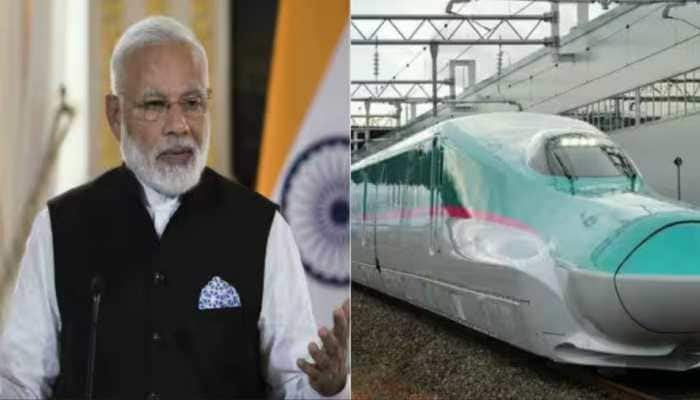Exclusive: Air travel trends to expect post Russia-Ukraine conflict - Longer flights, increased airfare
The pandemic had already taken its toll on the tourism industry over the last two years and now, the Russia-Ukraine war may spell distress for tourism in Central and Eastern Europe.
- Covid-19 lockdowns battered aviation industry globally
- Now Russia-Ukraine conflict has increased the problems for the industry
- Increased travel time rising fuel cost, less passengers hampering growth
Trending Photos
) Image for representation
Image for representation The years 2020 and 2021 were extremely challenging for both domestic and international tourism to say the least, all courtesy the pandemic. All hopes turned to 2022 as the pandemic began progressing to endemic in some parts of the world. But then came February 24, 2022, when Russia declared a war against Ukraine, making it not just one of the biggest humanitarian catastrophe in the history but a dampener in the global economy as well. Not only has the war sent shockwaves to the economies beyond the Russian- Ukrainian territories, but it has also impacted sectors including tourism and travel.
Conflict impacting tourism
With the closure of Russian airspace for Canadian, US-based, and European airlines, flights to some major destinations in these areas and India have become longer. Standing at crossroads, airlines have been bracing for the aftermath as the global aviation map has been redrawn. Geographically, Russia has always one-upped other countries, and with its airspace, providing vital Asia-Europe corridors, it advantageously aided the airlines to save money as well as fuel.
The repercussions of this conflict have led to the immediate effects – concerns about longer trips, increase in fuel expense for airlines, effects on freight traffic as the global supply chain was disrupted on a major scale – along with aircraft cancellations, and an increase in the use of alternate routes, such as Kazakhstan's recent tripling of airspace usage.
Longer flights, greater fuel costs
The closure of airspace has directly impacted the travel duration, making travel time between the US, European countries to South Asia nearly 90 minutes to 2 hours longer than ordinary. The Ukraine war has also caused oil prices to spike, temporarily surpassing the $100 (€90) per barrel mark. This hike in fuel costs will add further pressure on the aviation industry, which is only slowly recovering from months of pandemic-related travel restrictions.
Altered traveller mindset
The pandemic, followed by the Ukraine crisis, triggered a shift in the consumer mindset. Individual tastes play into choices and the travel industry must response by offering customizable experiences. Tourists worldwide are preferring to travel and arrive at their destinations without comprising their comfort levels. According to the individual’s alternative – it is all about their choice. Where true luxuries for travellers today is time, convenience and safety, it is now holding a paramount importance along with impacted international tourism.
With a lot of flights from The United States to South-East Asia routed via India – causing diversions in long-haul flights between Europe and East Asia leading to more layover time, the consumers have been benefited with an opportunity with respect to exploration and travel. Therefore, bringing up India’s likely geopolitical positioning in the upcoming years. In post-pandemic world, where major traveller hubs are experiencing staff shortages, causing delays and interruption the winners will be those who can provide reliable connections and efficient service.
Amidst these ideas cementing the behaviour in the consumer’s minds, it will create an opportunity for the travel industry, including the airline sector to explore the country and amp up their travel experience. Whether it means more travel comfort, better inflight entertainment, or the possibility of flexibly changing ticket dates and times, customers want to be in the driver’s seat and make these decisions as they go.
As we march ahead…
The industry has been through its own ebbs and flows. Helming through consecutive waves of pandemic and Russia-Ukraine conflict, the industry has seen a majority of ricochet in terms of frequencies, hoping to match pre-pandemic level numbers amidst the consumer shift. To turn around the up-ending challenges into the window of opportunities, the travel industry is working its way to provide a holistic experience for its consumers.
With visa woes becoming common among travellers, the aviation industry is shifting to robust demand for both work and leisure to a destination less travelled. i.e., duration of the flight. Though consumers are eager to take a vacation, they are opting for cost-cutting measures to mitigate the effects of the dollar's appreciation along with comfort.
After the hardships of the global pandemic, people want to reward themselves with a little bit of luxury. With the shift of consumer mindset to likely pay more to get tailored experiences and information, offering a more curated experience along modern premium-ness. The airline industry can surely follow on this insight to create a personalized travel experience while also ensuring the passengers’ safety and comfort for a seamless consumer experience.
As a result of the invasion and airspace restrictions, the industry as well as the consumers, have been embracing this new way of travelling. The steady recovery in the commercial aviation sector has lifted traffic to near pre-pandemic levels - but with a clear realignment in capacities and routes.
With global airlines planning to engage with domestic partners in certain countries, it has created the potential re-emergence of low-cost long-haul travel – pushing for tourism routes and direct connectivity to smaller airports. From reimagining the practices to ensure the industry’s survival in the post-crisis market, to adopting methods and focus on its long-term goals of strengthening economic impact.
This article is authored by Sakari Romu, General Manager, Finnair - India. All views are personal.
Stay informed on all the latest news, real-time breaking news updates, and follow all the important headlines in india news and world News on Zee News.
Live Tv







)
)
)
)
)
)
)
)
)
)
